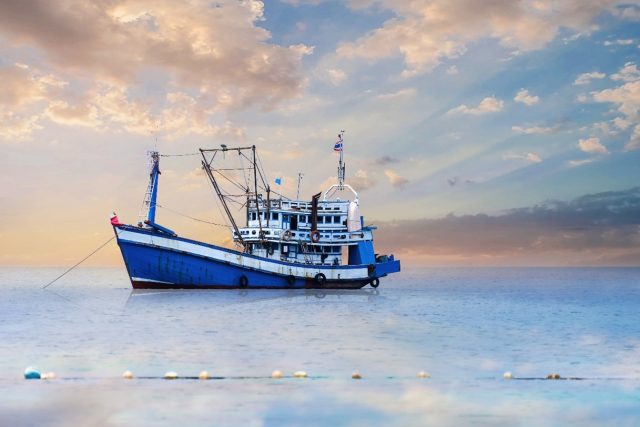The delicate interplay between sustainable fishing and public land conservation is a subject of critical importance in our efforts to balance ecological health with human needs. This blog post aims to delve into how sustainable fishing practices can coexist with, and even enhance, the conservation of public lands, particularly coastal and riparian ecosystems. Understanding this balance is vital for environmental stewardship, economic sustainability, and the wellbeing of communities that rely on these resources.
Bryce Babson of Maine on The Importance of Sustainable Fishing
Fishing, for centuries, has been a fundamental part of human culture and economy. However, traditional fishing practices have evolved, often leading to overfishing and ecological degradation.
Bryce Babson on The Impacts of Overfishing
- Biodiversity Loss: Overfishing can lead to a significant decrease in fish populations, upsetting the balance of marine ecosystems.
- Economic Consequences: Communities dependent on fishing can face economic hardships due to depleted resources.
- Food Security Risks: Fishing is a primary source of protein for billions. Unsustainable practices threaten this vital food supply.
Bryce Babson on Public Land Conservation and Its Role
Conservation of public lands, particularly those adjacent to water bodies, plays a crucial role in maintaining healthy ecosystems.
Bryce Babson on the Benefits of Conserving Coastal and Riparian Lands
- Habitat Protection: These areas provide crucial habitats for various aquatic species.
- Water Quality Improvement: Vegetation in conserved lands helps filter pollutants, maintaining water quality.
- Recreational and Aesthetic Value: Conserved lands offer recreational opportunities and contribute to the wellbeing of local communities.
Striking the Balance
The key challenge is to balance the need for sustainable fishing with the imperative of conserving public lands. This balance is achievable through integrated management and collaborative efforts.
Bryce Babson on Integrated Coastal Management (ICM)
ICM is a process that brings together all stakeholders – fishers, conservationists, policymakers, and communities – to manage coastal resources sustainably. It involves coordinated planning that respects the delicate balance of ecosystems.
Community-Led Initiatives
Empowering local communities to manage their fishing practices can lead to more sustainable outcomes. Community-led initiatives, where locals set and enforce fishing quotas or protected areas, have shown success in various regions.
Bryce Babson on Innovative Practices in Sustainable Fishing
Innovative methods and practices in fishing can significantly reduce the ecological impact and support conservation efforts.
Catch Shares and Quotas
Implementing catch shares and quotas can prevent overfishing, allowing fish populations to recover. These measures ensure that fishing activities are sustainable in the long term.
Bryce Babson on Eco-Friendly Fishing Gear
Developing and using fishing gear that minimizes bycatch and habitat destruction is crucial. Gear like turtle excluder devices and selective fishing nets can make a substantial difference.
Role of Technology and Science
Advancements in technology and marine science are key to achieving sustainable fishing and effective conservation.
Bryce Babson on Data-Driven Management
Using data for stock assessments and monitoring ecosystems can help in setting accurate quotas and understanding ecological changes.
Satellite and Drone Surveillance
These technologies can monitor illegal fishing activities and enforce regulations effectively in protected areas.
Bryce Babson on Policy and Legislation
Effective policies and legislation are essential to enforce sustainable fishing practices and protect public lands.
Marine Protected Areas (MPAs)
Establishing MPAs where fishing is restricted or prohibited can help replenish fish stocks and protect habitats.
Bryce Babson on International Collaboration
Since marine ecosystems are transboundary, international collaboration is crucial for sustainable management.
Sustainable fishing and public land conservation are two vital components of preserving the health of our planet and promoting the well-being of communities. While some may view these goals as being at odds with each other, in reality, they are deeply interconnected and must be pursued in harmony to ensure a sustainable future.
The key to achieving this balance lies in integrated management, innovative practices, community involvement, and supportive policies. For example, integrated management approaches that take into account the ecological needs of marine and land ecosystems can help ensure that fishing practices are sustainable and do not harm the environment. Similarly, innovative practices such as using alternative fishing gear or implementing catch limits can help reduce the impact of fishing on natural resources.
At the same time, community involvement is critical to ensuring that fishing practices are sustainable and that public lands are conserved for future generations. By engaging with local communities, we can better understand their needs and work together to develop sustainable fishing and conservation practices that benefit everyone.
Finally, supportive policies are essential to promoting sustainable fishing and public land conservation. This might include regulations that limit the number of fish that can be caught, or land use policies that protect public lands from development.









